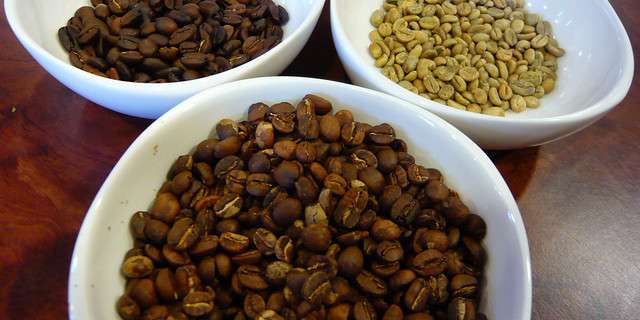
The process of roasting coffee begins with heat and a swelling of pastel green beans. First shedding their silver skins, cycles of bursts and darkenings soon follow, transforming the color of the beans from green to tan to the deepest browns. Eventually, the beans shrink, ending their life cycles in a quick, smooth blackening and hardening of their skins.
Coffee beans undergo a series of changes from the green beans, observed at the top right, to the darker colors that occur upon roasting.
Image Source: Flickr CC user Jessica Spengler
The physical changes that occur during the roasting process might seem straightforward; however, hundreds of chemical reactions are occurring in tandem. Proteins, polysaccharides, lipids and organic acids undergo decarboxylation and dehydration events as Maillard browning and caramelization occur among redox and polymerization reactions. Together, these events result in the disappearance of some reactants and the appearance of many more, which themselves add flavor and aroma to the beans. Importantly, roastmasters have used and still use color to determine when a roast has undergone the multitude of chemical changes described above and is considered “finished.”



